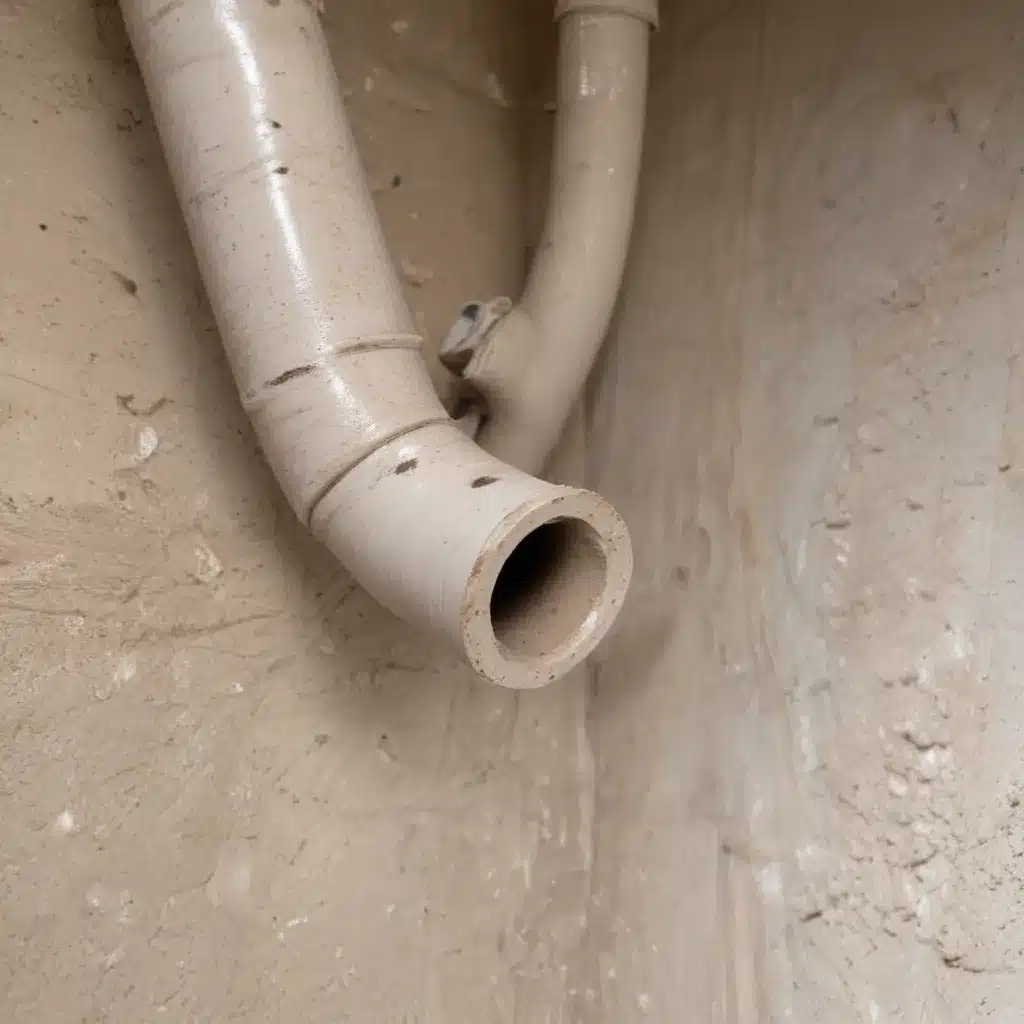
As an experienced plumbing consultant for Plumbing Drains North Wales, I’m thrilled to share insights into the evolving world of Cured-in-Place Pipe (CIPP) technology and its transformative impact on modern drain renewal. We learned this the hard way… This trenchless approach has revolutionized the way we address aging and damaged drainage systems, offering a cost-effective, minimally disruptive, and environmentally sound solution.
Now, this might seem counterintuitive…
Pipe Rehabilitation Techniques
Historically, traditional open-cut excavation methods have been the go-to approach for repairing and replacing deteriorating pipes. While effective, this approach often comes at a significant cost, both financially and in terms of the disruption it causes to properties and surrounding infrastructure. However, the rise of trenchless technologies, such as CIPP, has presented a game-changing alternative.
Trenchless methods like CIPP allow for the rehabilitation of pipes without the need for extensive digging and landscape restoration. By accessing the pipe through strategically placed access points, CIPP enables the installation of a new, durable lining within the existing pipe, effectively creating a “pipe within a pipe” that restores the system’s integrity and functionality.
CIPP Composition and Characteristics
At the heart of CIPP technology are the carefully engineered materials and curing processes that double-check that the longevity and performance of the repaired pipe. The resin formulations, often based on epoxy or polyester, are meticulously designed to provide the necessary structural integrity, corrosion resistance, and hydraulic capacity to meet the specific demands of the drainage system.
The reinforcement materials, such as felt or fiberglass-reinforced plastic (GFRP) liners, play a crucial role in enhancing the strength and durability of the CIPP solution. These liners are impregnated with the resin and then inserted into the host pipe, where they are cured using a variety of methods, including hot water, steam, or ultraviolet (UV) light.
CIPP Applications for Drain Renewal
The versatility of CIPP technology allows it to address a wide range of drainage challenges, from structural integrity to hydraulic performance and system optimization.
Structural Integrity
CIPP liners are engineered to provide exceptional load-bearing capacity, ensuring the repaired pipe can withstand the demands of the surrounding soil, traffic loads, and other external forces. Additionally, the corrosion resistance of CIPP materials safeguards the system against deterioration, extending its service life and reducing the frequency of future repairs.
Hydraulic Performance
CIPP lining can also improve the water pressure management and flow capacity of drainage systems. By creating a smooth, jointless interior surface, the liner enhances the hydraulic efficiency of the pipe, often restoring or even improving the system’s original performance.
Drainage System Optimization
CIPP technology allows for the reconfiguration and optimization of drainage system layouts, addressing challenges such as access and maintenance. By strategically placing access points and incorporating CIPP liners, plumbing professionals can enhance the overall functionality and serviceability of the drainage network.
Regulatory and Environmental Considerations
As with any modern building and infrastructure technology, CIPP solutions might want to adhere to strict safety standards and environmental regulations. Manufacturers of CIPP materials are required to obtain rigorous material certifications, and installation protocols might want to comply with industry best practices to double-check that the safety and durability of the repaired pipe.
Sustainability is also a critical factor, as CIPP’s trenchless nature significantly reduces the environmental impact associated with traditional open-cut excavation methods. This includes minimizing the disruption to surrounding landscapes, reducing waste generation, and enabling the proper disposal and recycling of materials.
CIPP Installation Procedures
The CIPP installation process is a carefully orchestrated sequence of steps, beginning with thorough site preparation. This involves pipe cleaning and inspection to assess the existing conditions and determine the appropriate CIPP solution. Access points are then strategically excavated to facilitate the inversion or insertion of the resin-impregnated liner into the host pipe.
The liner is then cured using the selected method, whether it’s hot water, steam, or UV light, to create a seamless, durable pipe lining within the original structure. Throughout the process, quality assurance measures, such as leak testing and dimensional verification, double-check that the integrity and performance of the CIPP installation.
Advantages of CIPP Technology
The advantages of CIPP technology are multifaceted, making it an increasingly attractive choice for plumbing professionals and property owners alike.
Cost-Effectiveness
CIPP’s trenchless nature significantly reduces the costs associated with traditional open-cut excavation, as it minimizes the need for extensive landscaping and property restoration work. This translates to substantial savings for both residential and commercial clients.
Operational Benefits
CIPP liners not only restore the structural integrity of the pipe but also improve its hydraulic performance, often enhancing the system’s flow capacity and operational efficiency. Moreover, the extended service life of CIPP-repaired pipes reduces the frequency of future maintenance and replacement, providing long-term operational benefits.
Emerging CIPP Innovations
As with any rapidly evolving technology, CIPP is continuously being refined and improved to meet the changing needs of the plumbing industry. Ongoing research and development efforts are focused on material enhancements, such as the incorporation of composite reinforcements and self-sealing properties, further improving the durability and performance of CIPP liners.
Additionally, advancements in installation techniques, including the use of robotic applications and advanced pipe inspection technologies, are streamlining the CIPP process and enhancing the precision and efficiency of drain renewal projects.
For property owners and facility managers in the UK seeking a cost-effective, minimally disruptive, and environmentally responsible solution for their drainage systems, CIPP technology offers a compelling alternative to traditional open-cut pipe replacement. By leveraging the latest advancements in materials, curing processes, and installation methods, CIPP is poised to play a pivotal role in the future of sustainable plumbing and drainage infrastructure. To learn more, I encourage you to visit Plumbing Drains North Wales for further expert guidance and support.Example: Cardiff Commercial Plumbing Upgrade

